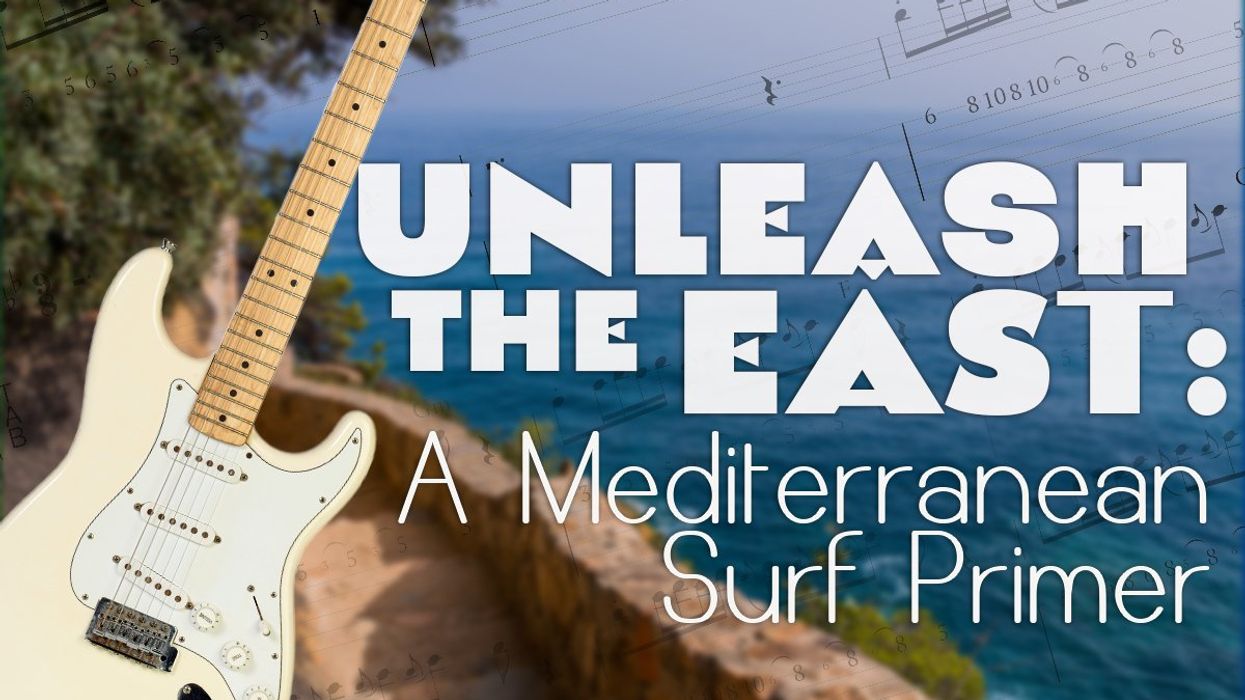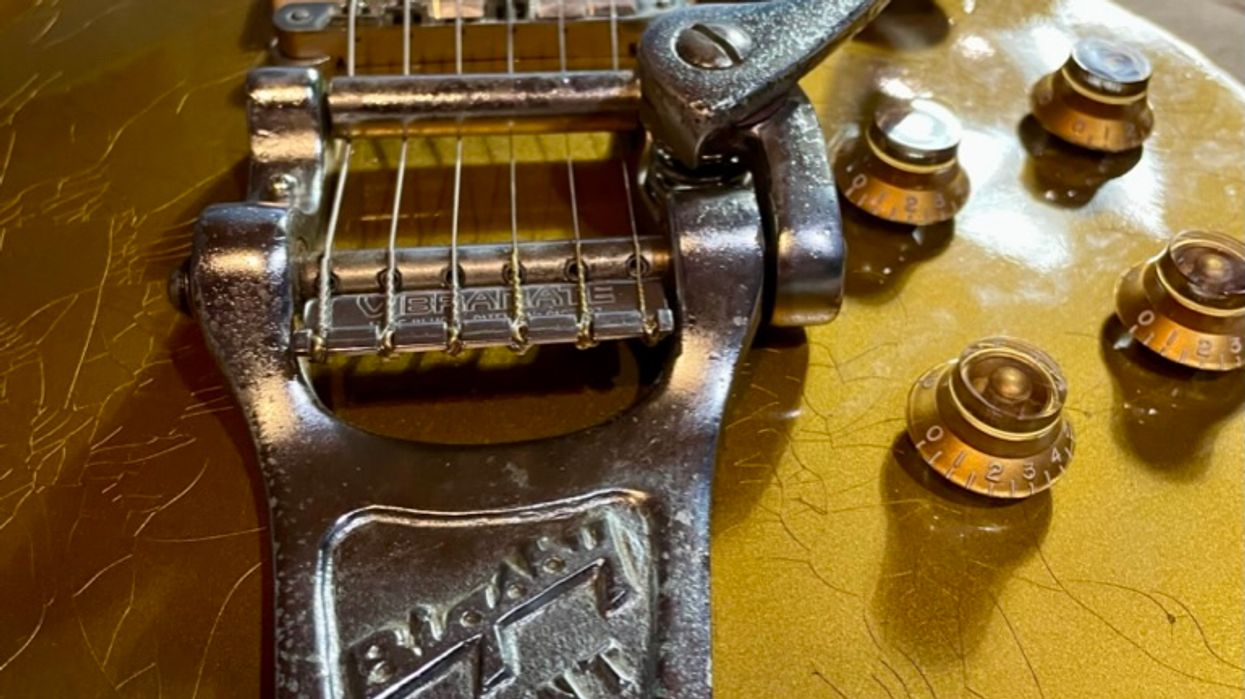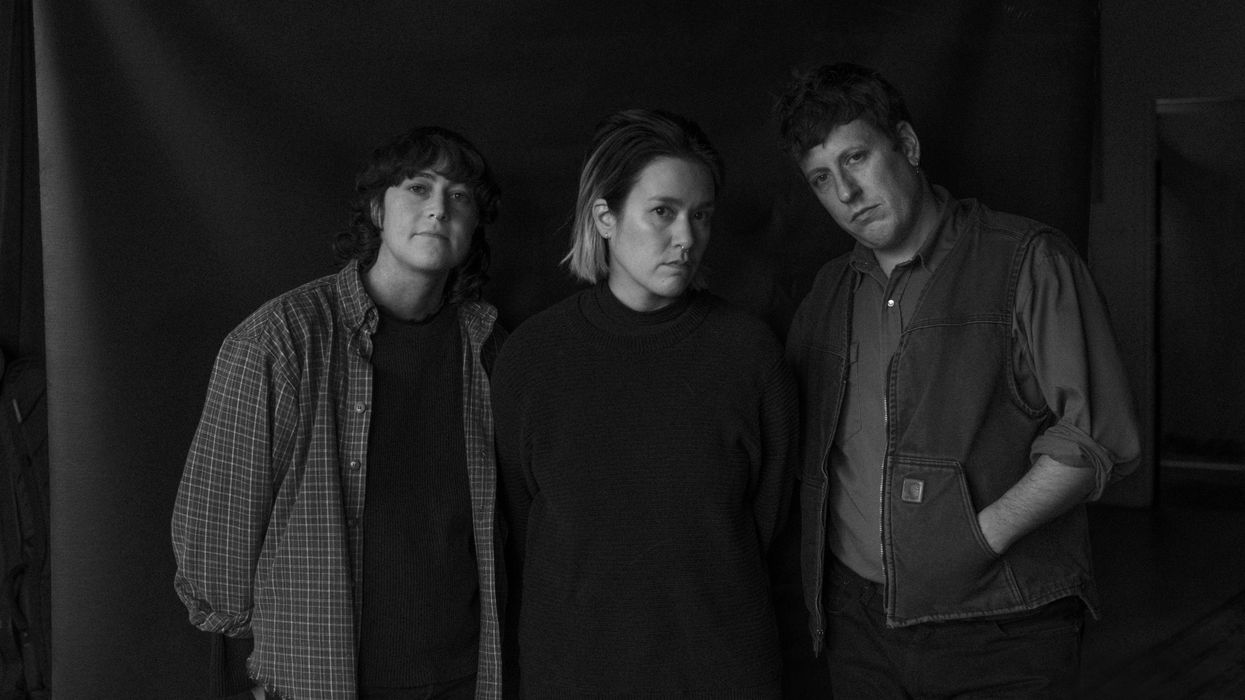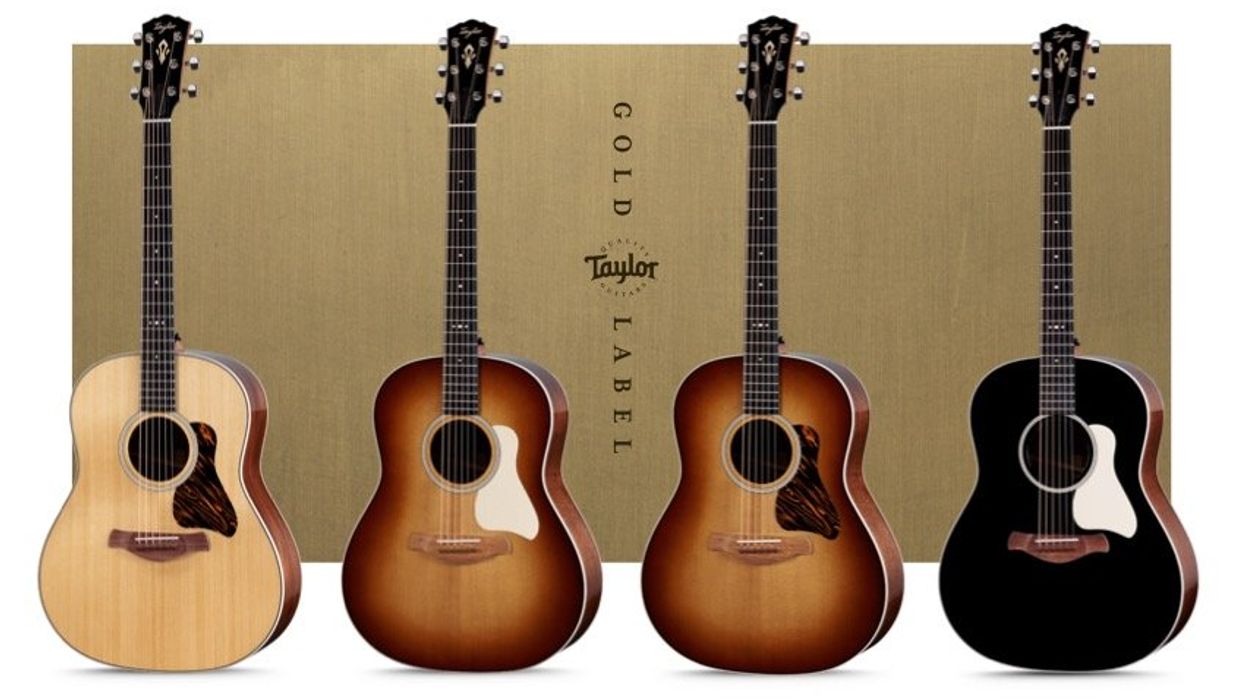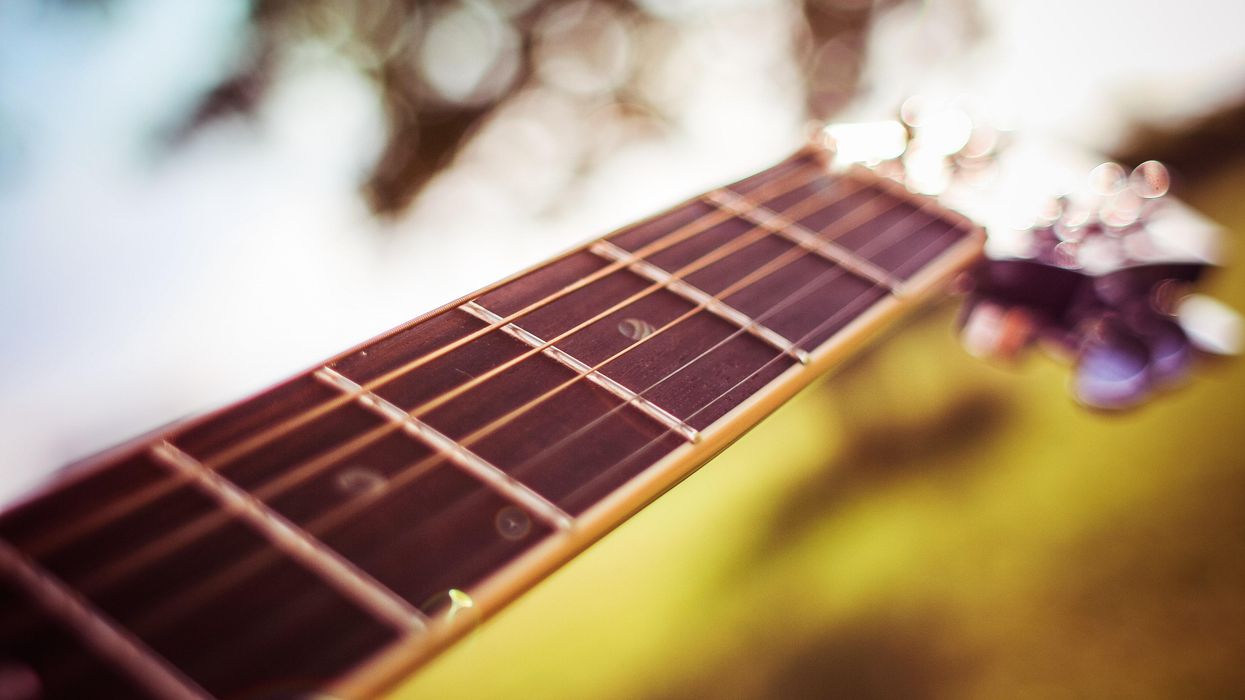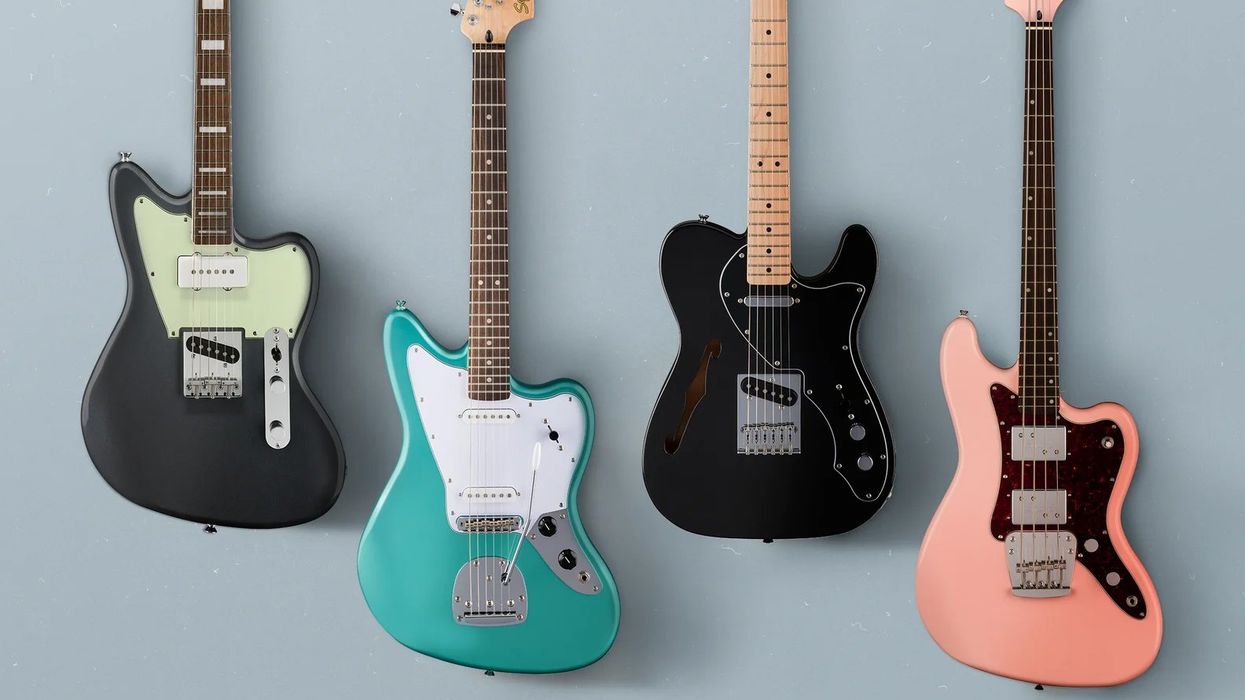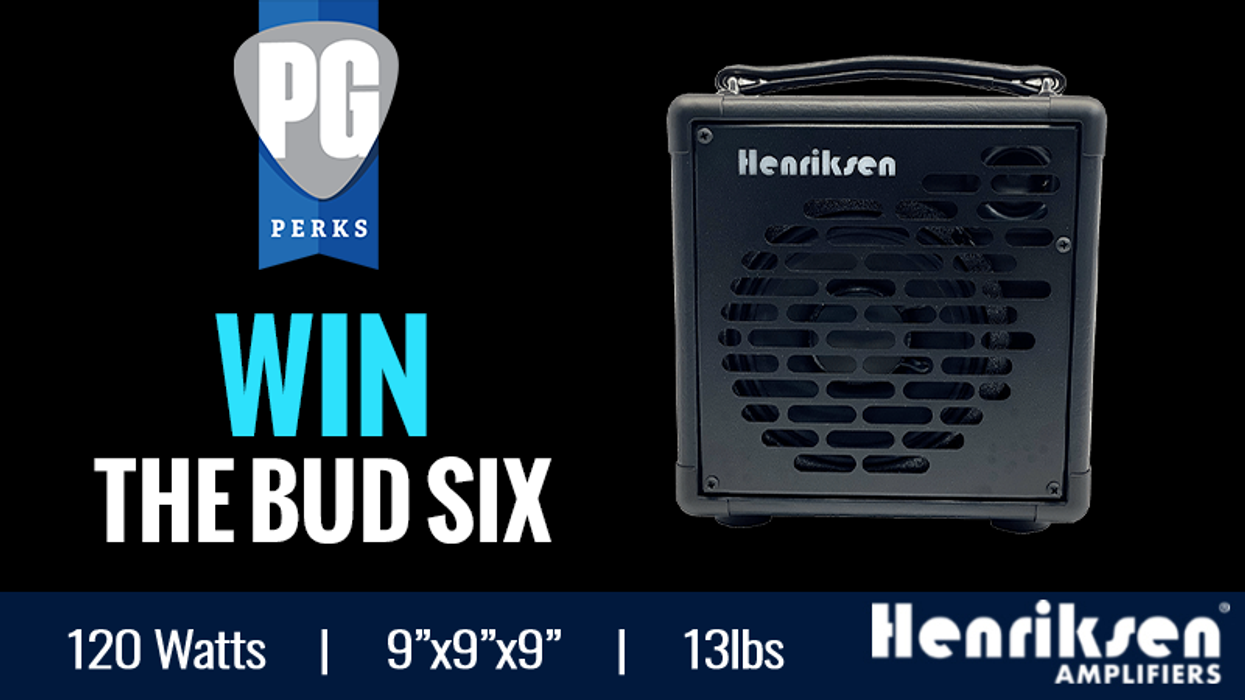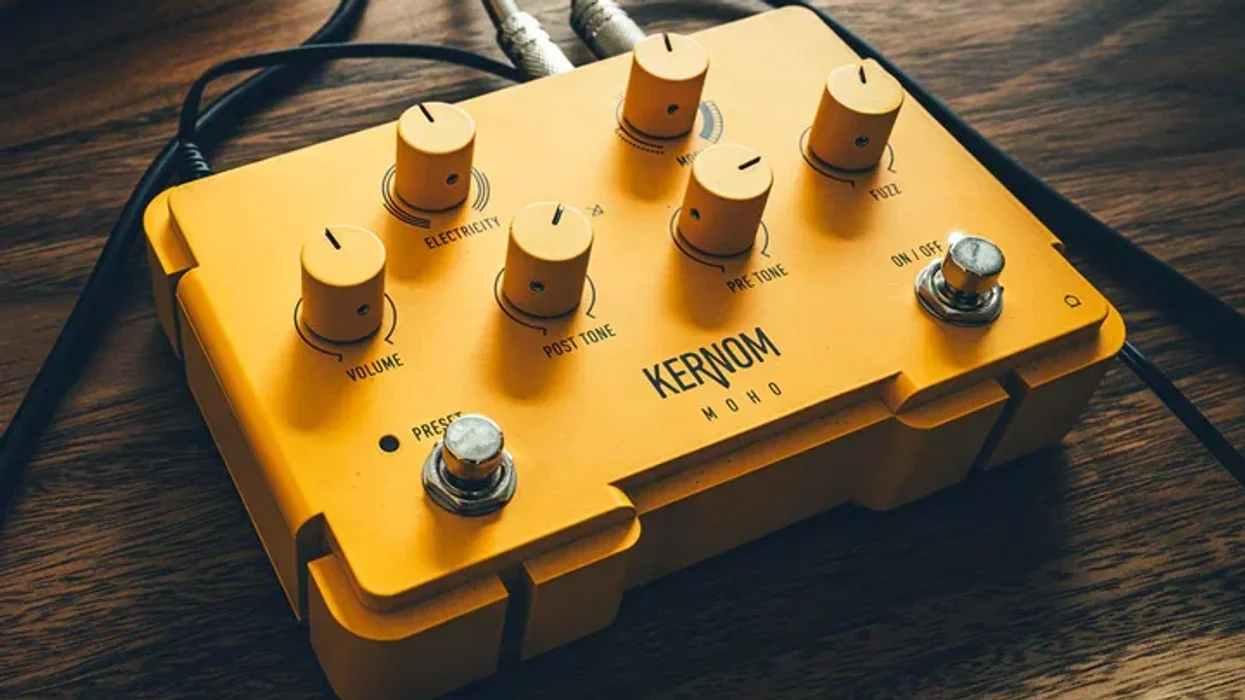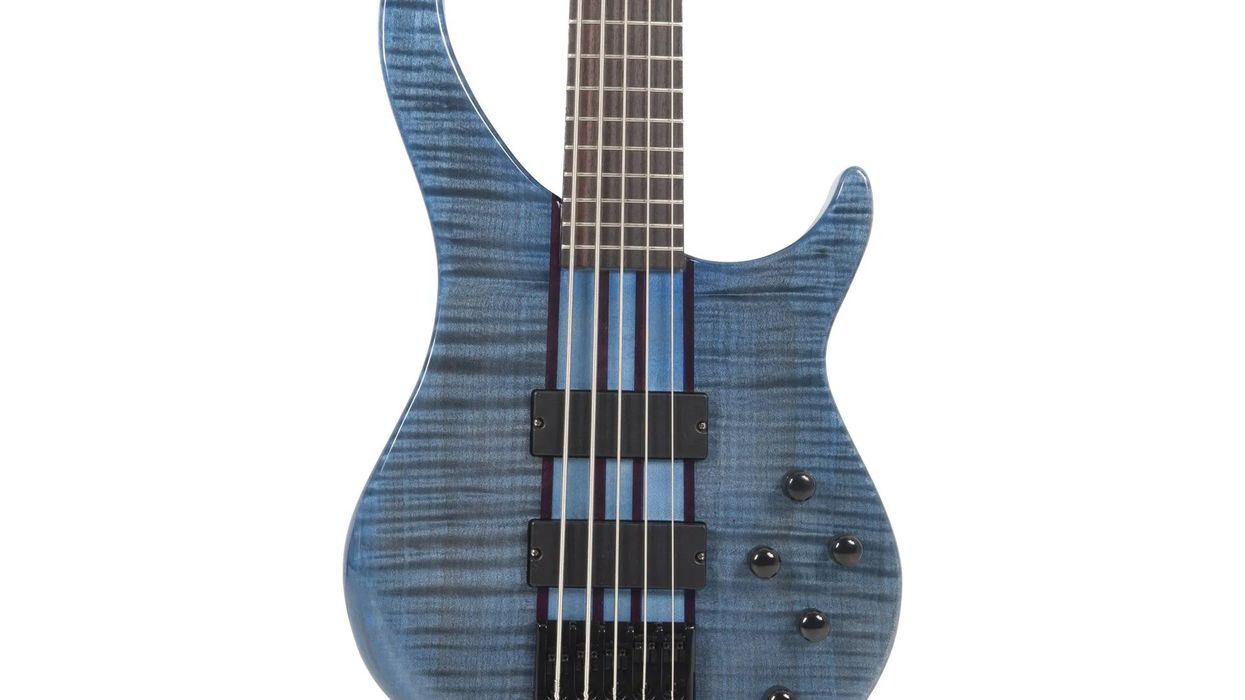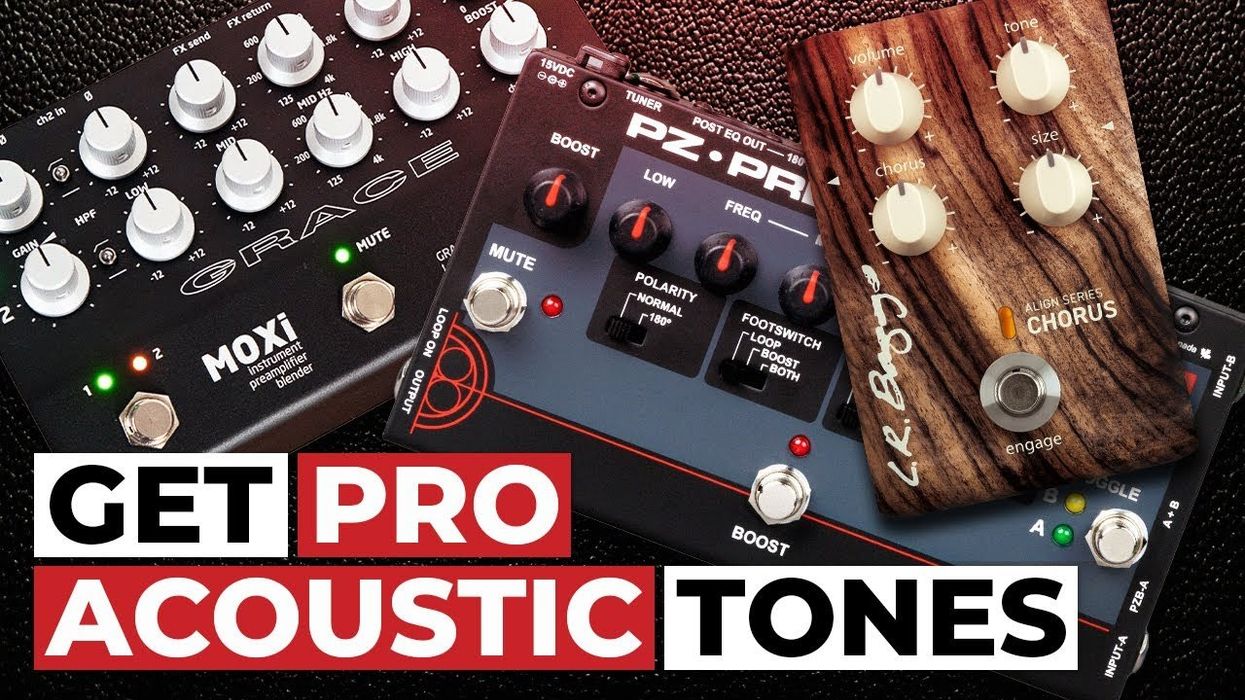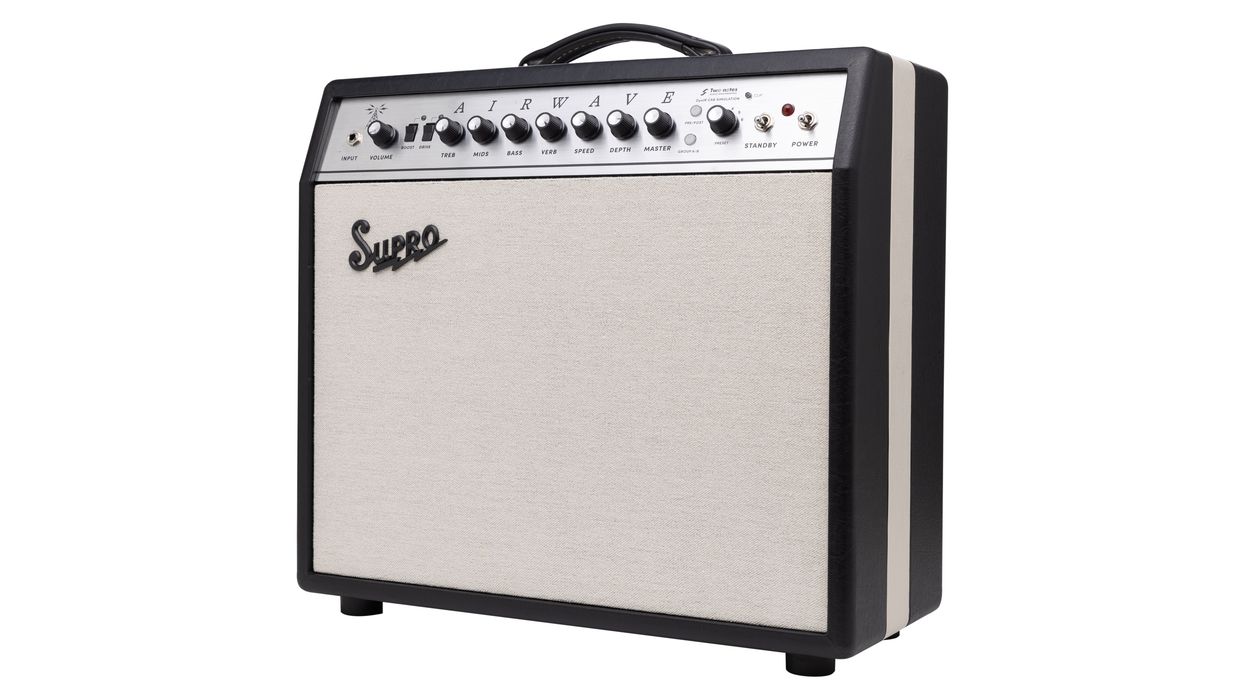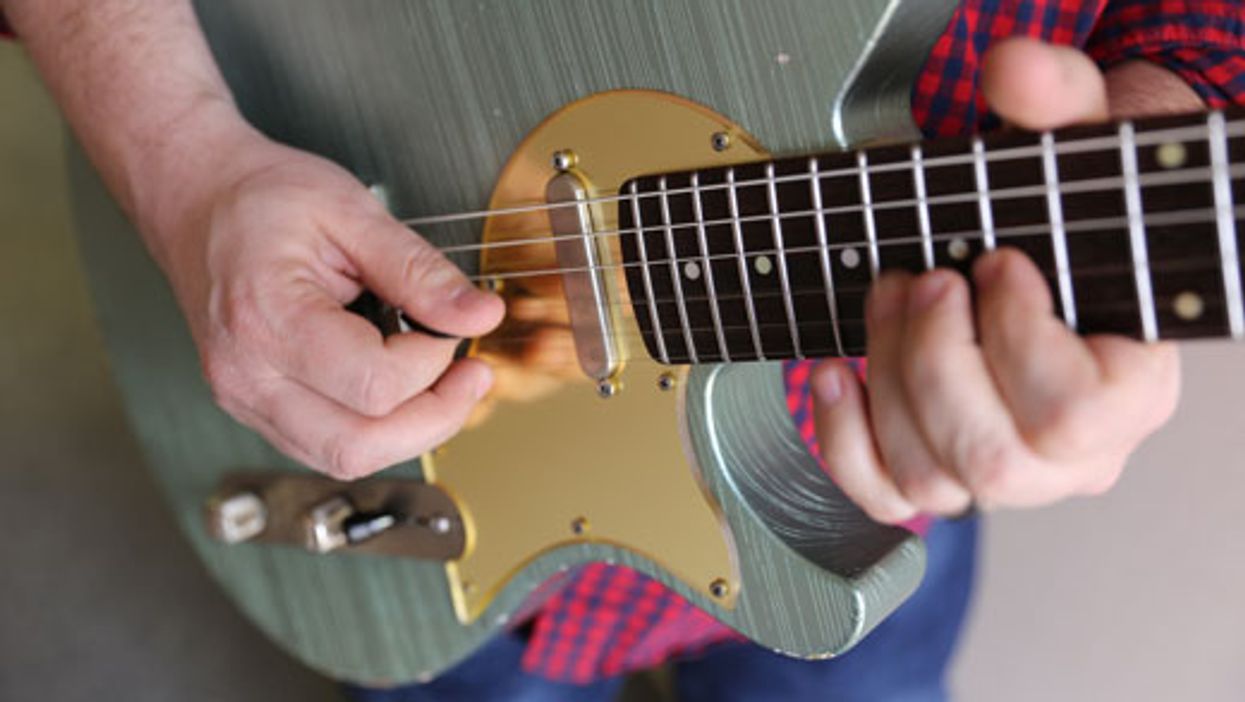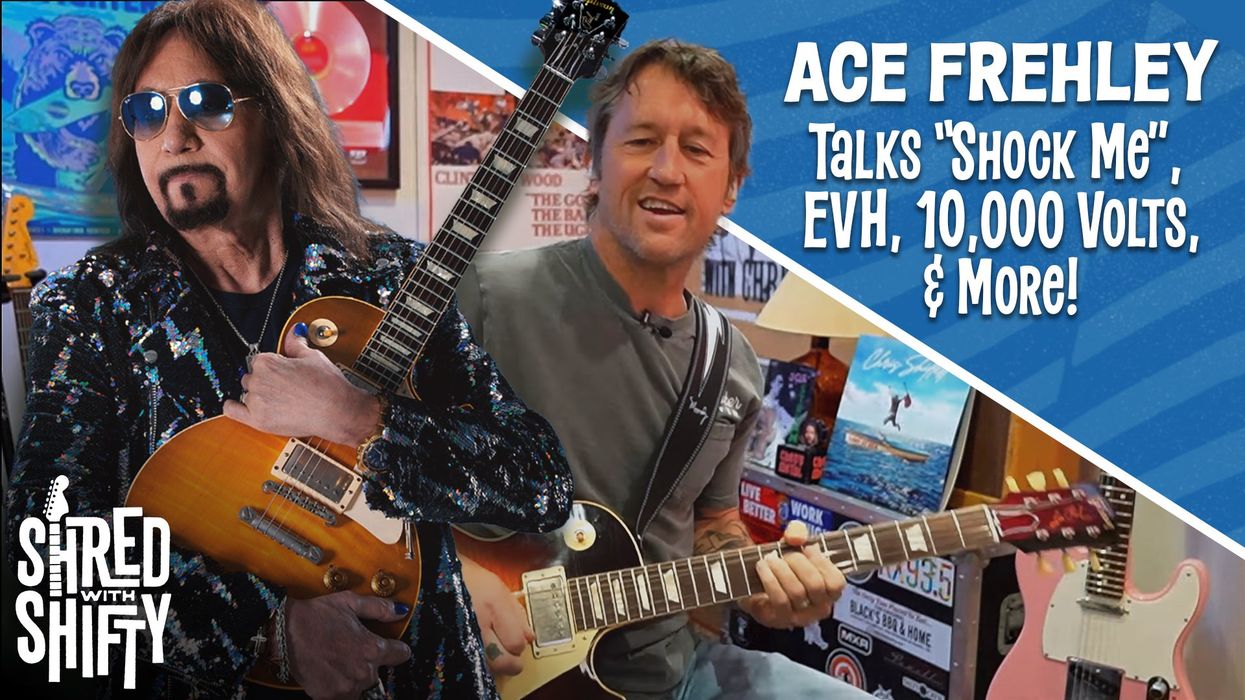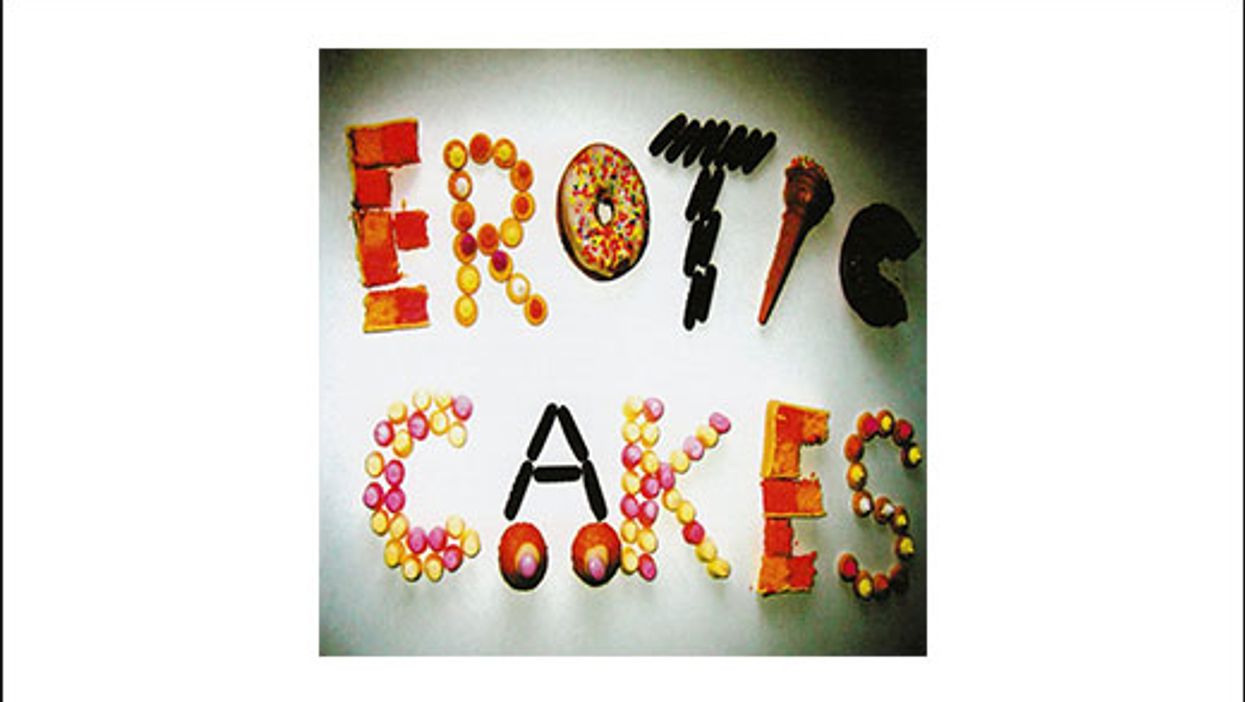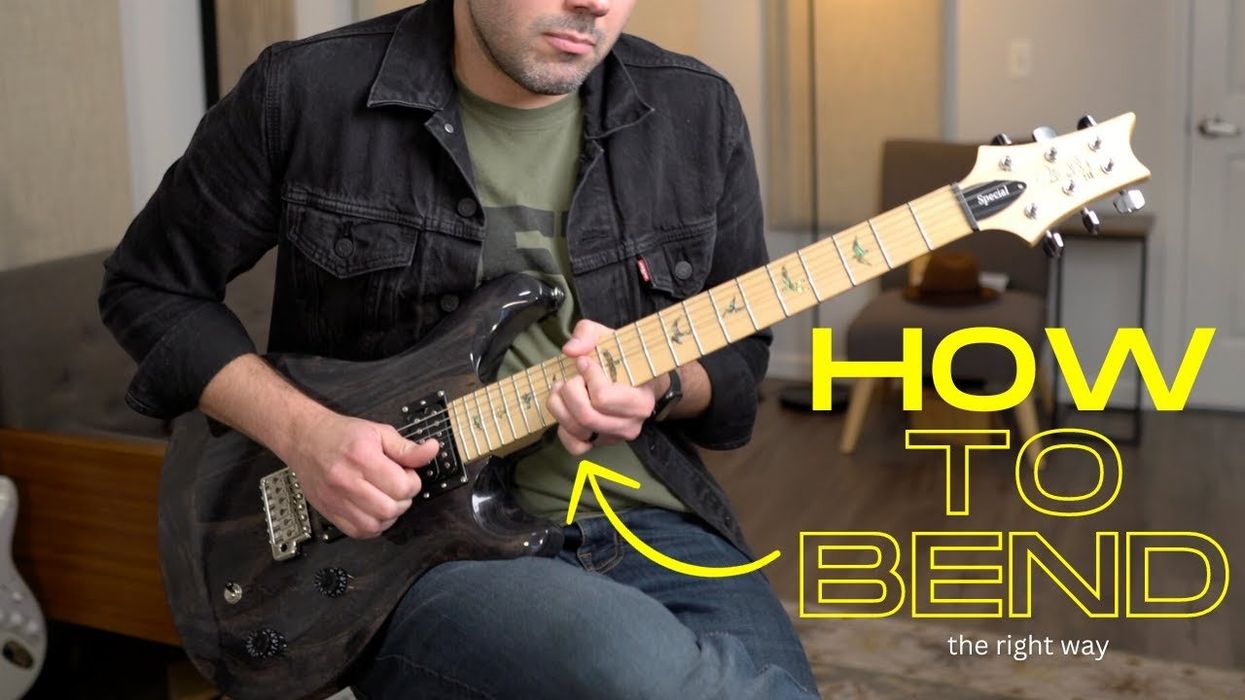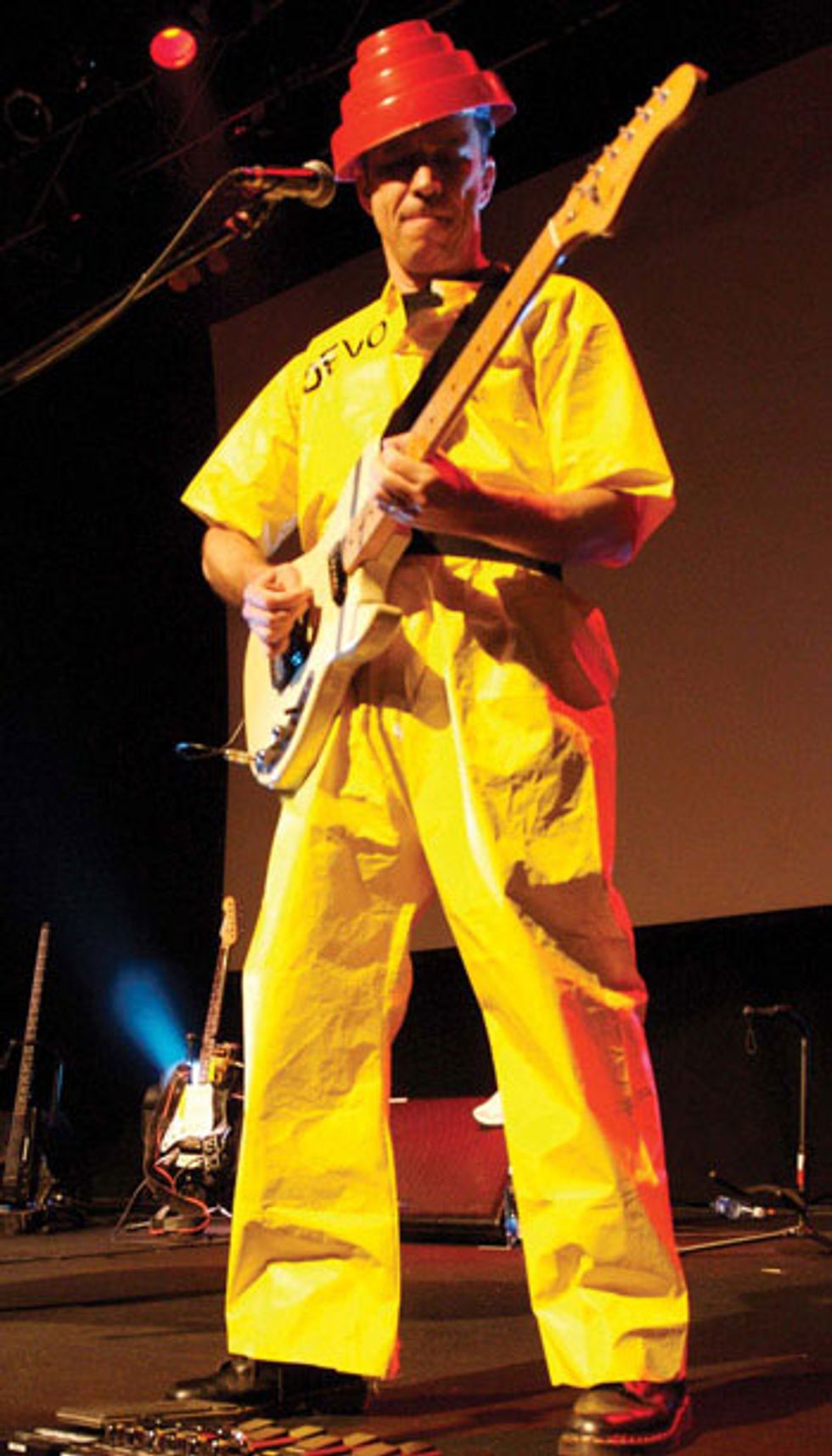 |
Devo recently dropped Something For Everybody—their first album in 20 years— and, just as on classic Devo cuts like their 1980 smash hit “Whip It,” the guitars are up front and prominent. Supplying the guitar for Devo’s particular brand of social and musical subversion is Bob Mothersbaugh, who, given Devo’s reputation, you’d probably think was a half-automaton with a synth built into his chest. But Mothersbaugh is a guitar purist with affection for British Invasion bands as well as the old bluesmen. After all, you can’t deconstruct music you don’t know how to construct in the first place.
Premier Guitar caught up with Mothersbaugh in the middle of Devo’s summer tour to talk about his favorite guitar—the entry-level G&L SC-2—buying back his weird-as-hell custom Ibanez “Spud” guitar from a professional skateboarder, and his unsurprising habit of warping every opportunity for a signature-model guitar.
Who were your early guitar influences?
Well, I’m just old enough that I listened to the Kinks and Rolling Stones when they were happening. Then, of course, Jeff Beck, Eric Clapton, and Jimi Hendrix came along.
“I’m a Potato,” from Hardcore Devo, Vol. 1 (74-77), is an interesting mutation on the blues form.
Yeah, in the very early days Devo was kind of blues sounding. I listened to Chuck Berry and Keith Richards—those guys were big influences.
Do you still listen to the old blues?
I love it. Muddy Waters and Hound Dog Taylor always do it for me.
When Devo was developing the de-evolution concept, did you consciously try to deconstruct the music that influenced you?
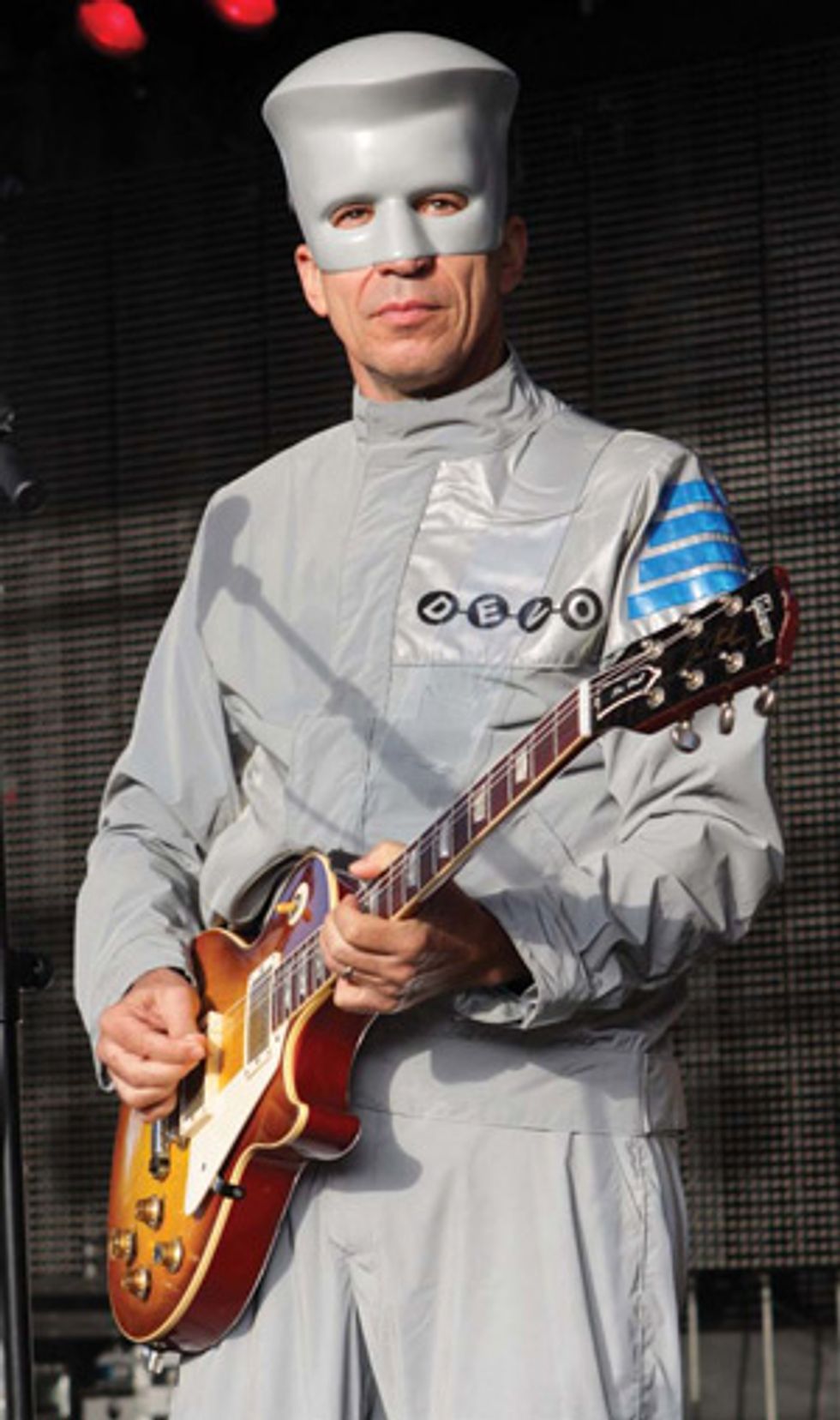 |
Do you remember your first guitar?
Oddly enough, it was a Coral Sitar.
Wow—no wonder your playing went sideways.
I know. After about six months I thought, “Man! I’m tired of these sympathetic strings.” So I took a jigsaw and cut them off, but it still sounded like a sitar. I figured out it was the plastic bridge that made it whiny sounding, so I took it apart and tried to find a new bridge, but couldn’t. The guitar was put in the barn and I kind of forgot about it.
Was your first amp as ill advised?
My first amp was some cheap head. I had a speaker that I strung up in a fruit crate, so the speaker was just dangling, suspended by strings—like a microphone shock mount.
I had no idea speakers had to be mounted to a board so they could push air. It was pretty ineffective, but when you’re a kid in a basement in Akron, trying to perfect your Pete Townshend windmills, it was fine.
What guitars are you using these days?
For the live shows, I’m using a ’59 Les Paul reissue—a Gibson Custom Shop instrument modeled after Mike Bloomfield’s guitar. For the new album, I used a 1964 SG and a couple of my G&L SC-2s. The SC-2 is probably my favorite guitar. I was introduced to them when we did the New Traditionalists album. I did an interview then where I mentioned buying a weird guitar called a G&L and how much I liked the tremolo system because it stayed in tune. The day after the interview hit the newsstands, someone from G&L called me and asked, “Hey, can we endorse you?”
Is there a G&L Bob1 Signature model we don’t know about?
Uh, no. G&L gave me three or four of their top-of-the-line guitars and then they sent me the SC-2, more of an entry-level student guitar, which is what I stuck with.
What drew you to the SC-2?
I love its [Magnetic Field Design] single-coil pickups, which have a really springy sound with great high end. The guitar itself is lightweight and plays really well. The tremolo has a great feel and, as I mentioned, it stays in tune better than any other I’ve tried. I can throw it against the wall and it still plays great.
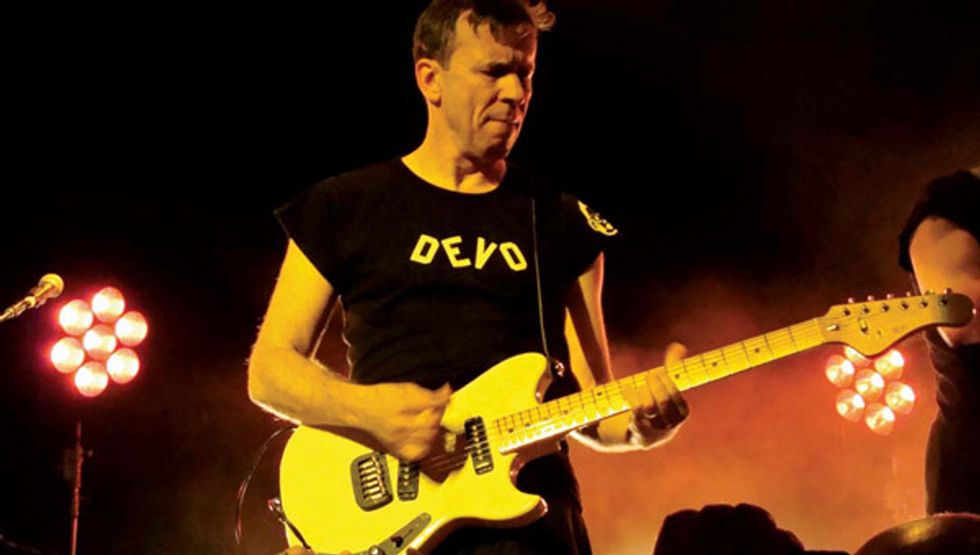
G&L’s entry-level SC-2 solidbody is Mothersbaugh’s favorite electric, largely because of the clear, “springy” sound he gets from its high-output Magnetic Field Design singlecoils— but also because the guitar takes a licking and keeps on ticking. “I can throw it against the wall and it still plays great,” he says. Photo by Jon Wright
Besides the SG and SC-2s, did you use any other guitars on the new album?
Yes, I played a Rickenbacker 330 of unknown vintage that I bought from Doug Fieger of the Knack, as well as a custom guitar Ibanez made for me.
The blue one?
Yeah.
Is that a cloud or a spud?
It’s funny you should ask, because when we were in Japan in 1979, Ibanez asked me to endorse their guitars. I said, “Well, whaddya got?” and they showed me a catalog. I looked at them all and said, “Nah, no thanks. I don’t like any of these.” Then they said, “We’ll build you one.” So, very flippantly, I took a Magic Marker to a Les Paul-shaped guitar of theirs and drew scallops on it and said “Here, cut it like a potato, paint it brown, and put every possible type of electronics in it.” Then, about six months later, the blue guitar showed up. It was supposed to be a potato, but it wound up as a Japanese artist’s interpretation of what I had drawn—so it’s somewhere between a potato and a cloud.
During the dark days of the mid ’80s, after the band went on hiatus, I lost the Spud guitar. Years later, my friend Vahe Vahe of the band Nu-Tra heard that a pro skateboarder named Jason Jessee had it. We got in contact with him and I bought it back.
What about amps?
On the latest album, I used a WEM Dominator combo. It’s an old British tube amp that sounds incredible. Other than that, I just used a Line 6 PODxt Live.
Did you employ any interesting stompboxes?
I pretty much used the effects in the PODxt Live. I’ve used the PODxt Live for many years, so I know how to navigate it pretty well.
Do you still use the PODxt Live?
No, I’m down to my last working unit. They are long discontinued, so I switched to a Fractal Audio Axe-Fx. It’s an amp simulator and pedal simulator that sounds fantastic and is quite roadworthy.
Do you still play the La Baye 2x4 for your whammy-bar torture and crowd-surfing thing during “Smart Patrol/Mr. DNA”?
Every night!

Mothersbaugh onstage at the 2010 Coachella Festival with his La Baye 2x4 guitar, which features a Howard Holman-designed tremolo and what appears to be a non-stock single-coil in the neck position. Photo by Peter Dervin
Are you picky when it comes to cables and picks?
Well, I like coiled cords but they get all tangled up onstage, so I use a wireless system. I use Dunlop Gator Grip picks, because the outfits we wear onstage make me sweat profusely. The picks have a powder on them that gets sticky when they come into contact with sweat, so I don’t drop many picks.
You wouldn’t want to bend down to retrieve a pick, only to have your Energy Dome fall off.
Exactly, it would spoil the illusion!
Has the way Devo writes and records evolved over time?
Totally. The way we used to do it was that someone had an idea, and he’d start playing it, and everyone would just start playing along. Over the course of a couple of days, we would play a song over and over, and everyone would hone their parts. We had to play the whole song and remember our parts and think about the changes, because you had to play it all live. The last couple of albums we did in the late ’80s were all done with sequencers and synthesizers, and they had very little guitar. A lot of times, the whole song was pretty much done by the time I put a guitar part down, so I had to think of small guitar parts that didn’t clash with all the synth parts.
Most of the classic Devo tunes are heavily guitar based, and it seems that the more the band moved away from guitar on later albums, the less power the songs had.
Yeah, I’m aware of that [laughs]. Twenty years ago, someone in the band decided that guitars were obsolete and nobody would be using guitars 20 years from then, and they tried to make that a reality, which really didn’t work for us.
Well, we’re glad you put your foot down on that. Something for Everybody has tons of guitar on it—like the old days!
True, but when we started Something for Everybody, I said “Let’s play like a band, everyday.” Everybody said, “Yeah, that’s what we need to do!” And we did it for exactly one day. In my opinion, there wasn’t enough real jamming. The album was essentially assembled in pieces using [MOTU] Digital Performer or [Apple] Logic by whomever was in the studio at the time.
“So Fresh” sounds like classic Devo.
When we first tracked that song, I put a different solo—a more contemporary-sounding one—on it. But John Hill and Santigold [Santi White] came in to help produce the song, and Santigold said, “No Bob, don’t you remember your lead in ‘Be Stiff’? You’ve got to do something exactly like that.” So I thought about it for a minute and said, “Wow, you really know your Devo history.” Then I went back into the studio and whipped out a solo, a là “Be Stiff.”
Do you remember which guitar and amp you used for that track?
I used the Rickenbacker and WEM amp, as well as a little handheld Radio Shack amp that John Hill had brought in. I also used the Ibanez Spud guitar.
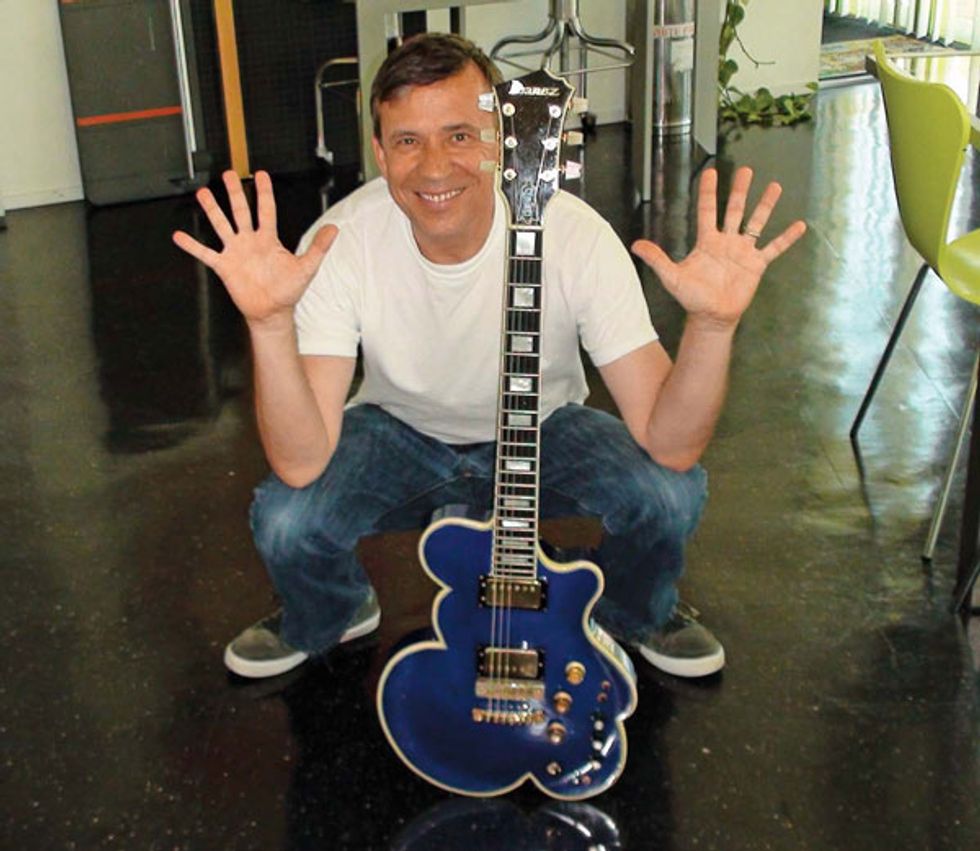
Mothersbaugh and his storied Ibanez “Spud” guitar. Photo by Natalie Montgomery
The riff on “Mind Games” is awesome, too.
I really like “Mind Games” because I play a guitar part all the way through it. After recording it I thought, “I know what would really make this cool.” So I took another track and doubled the whole part an octave higher. I’m pleased every time I hear it.
Care to comment on some older songs?
Sure.
“Girl U Want”—great riff. How did you get the guitar sound on that track?
The meat of the sound is the Ibanez Spud guitar, which has active electronics. I cranked up the midrange on the guitar, as well as the amp, which was an Acoustic that was sort of a Mesa/Boogie clone with a graphic EQ. I did weird things with the EQ, like making designs and patterns with the EQ sliders.
The turnaround following the solo is killer. It reminds me of George Harrison, in that it isn’t flashy but it serves the song.
I’ll take that as a big compliment—I’m a fan of George Harrison.
On “Freedom of Choice,” you double the synth line. Was it written on guitar or keyboard?
I remember Alan [Myers, former Devo drummer] had a phrase he played on guitar [sings guitar part], and he wanted to jam with me on it, so I learned it. At some point while we were working on Freedom of Choice, I said, “Hey, I think Alan’s bit would fit in there.” I love that album, because it represents a period where I really was into getting every kind of tortured noise from the guitar I could. But I think the songs from that album sound better live now, because my sound has more growl to it.
With all the technology being dangled in your face when you hit it big, did you ever use a guitar synthesizer?
Back in 1979, I used a device made by 360 Systems. It was a big box that sat next to your amp and required a special pickup. The 360 Systems people recommended I use a Les Paul, and at the time I was horrified—I thought Les Pauls represented arena rock, long hair, and Puka shells. But I got a Les Paul and took a jigsaw to it with the intention of making it look like a skull. I cut the little horn off at the cutaway and flipped it over backwards and thought it looked a lot better. The 360 was a horrible synth and really didn’t sound good. I only used it for one tour.
And here you are, some 30 years later, playing a Les Paul in an arena.
That’s de-evolution for you.
You perform onstage with synchronized video. Do you have to rehearse endlessly to get your music to sync to the video?
No, because we have a click track that goes to the drummer.
Does that leave you any room for improvisation?
Very little. For example, onstage last night I was thinking, “I should use the other channel of the Fractal Audio for the first part of ‘Jocko Homo.’” But I have a guitar tech [Ed Marshall] who is always watching the box to make sure it’s on the right setting. I tried to change it to the setting I wanted, but he changed it back. I thought, “Okay, we’ll have to discuss this after the show.”
Has touring become a grind?
I miss my family, but that’s about the only thing. I can deal with all the crappy hotels and overnight bus rides. It’s all good once we get onstage—that hour and a half— because I just love playing.
Bob Mothersbaugh's Gearbox
Guitars
Gibson Custom Shop Mike Bloomfield Les Paul, 1964 SG Standard with P-90s and a Gibson Vibrola, multiple G&L SC-2s, Ibanez Spud guitar with Ibanez active pickup system, 1967 La Baye 2x4
Amps and Effects Processors
WEM Dominator combo, Line 6 PODxt, Fractal Audio Axe-Fx, Ibanez Tube Screamer
Strings and Picks
GHS strings GBXL .009–.042 (Les Paul and La Baye), GHS GBL .010–.046 (G&L SC-2s), Dunlop Gator Grip picks
Miscellaneous
Brace Audio DWG-1000x wireless system, custom medium-gauge picks printed with “Bob 1 DEVO”
